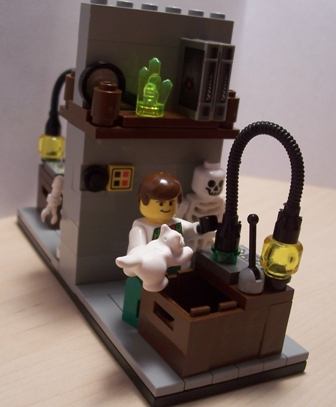I've
previously blogged cookies of LEGO Rosalind Franklin and Hedy Lamarr made by Wendy Staples of the Quirky Cookie for a ScienceGrrl event. I really need to feature her versions of Jill Tarter & Jocelyn Bell Burnell as well.
Tarter is an American radio astronomer, who has spent much of her career on the search for extra terrestrial intelligence (SETI), and she did other important work on astronomical bodies such as brown dwarfs. Carl Sagan based the character Ellie Arroway in his novel Contact in part on Tarter. BTW, you should really read that book. The book (NOT the movie) is full of great insights into life as a graduate student, the conduct of international science, thoughts about how information can be transmitted, descriptions of radio telescopes, and even a very thoughtful examination of the interaction of science and faith.
Bell Burnell is another important radio astronomer, from Northern Ireland. She has had a long career in science and academics, but is perhaps best known for her discovery of pulsars as a graduate student. There was a bit of a controversy in that her research adviser, Antony Hewish, was awarded half of the 1974 Nobel, and not Bell Burnell. The question of who gets the true credit for a discovery - student or teacher - has always been a question. For the record, Bell Burnell has said publicly that she did not have problems with the decision as it was in keeping with common practice, and she has received a lot of recognition and awards for her work.

Just for good measure, Wendy also made a bunch of generic scientists as well.









